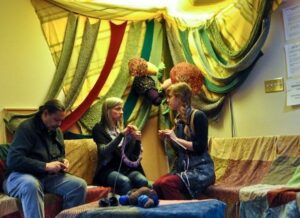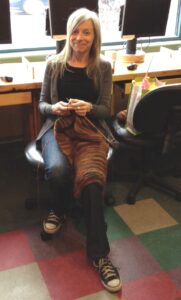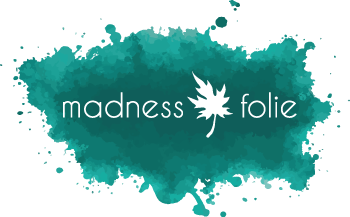Knitting Group

PARC’s Knitting Group began in 2010 when the facilitator Tara Kerr came to PARC looking for a six month volunteer placement for school – and she has been there ever since. Tara is the group facilitator, who has a teaching background and a gentle nature.

Tara describes her philosophy as “tell me what you want to make and I’ll help you make it.” With ten to twelve members all working on different projects and asking questions, it can be a bit of a challenge for Tara – as there is only one of her, “It stretches me, so members have to be patient; because they are working on different projects, it’s difficult to reach everyone.” But, as she points out, people work at different skill levels and sometimes members are able to help each other. In fact, it is this sense of getting to know people and group learning that Tara most appreciates about the group.
Terence Williams has been attending PARC’s knitting group for more than a year and over that time, has learned a number of stiches and has enjoyed the sense of camaraderie and friendship that pervades the group. Challenging the stereotype of knitting as primarily a women’s hobby, a roughly equal number of men and women comprise the group. This gender balance is just one of the aspects of the group that Terence appreciates. He also likes the fact that there is a practical aspect to the hobby with each person ending up with something that is useful, whether it is a hat or a scarf.

While some members work from a pattern and others do not, Terence points out that the choices of colour, wool type and the kind of stitch used will all result with a different end product. You don’t always know how the project is going to turn out. Tara observes that, due to the repetitive motion involved in knitting, the hobby has proven therapeutic effects, “It is also a communal activity that we can do together. We go shopping together, help each other with the projects we’re working on.” Since the beginning, Tara has emphasized the inclusivity within the group: “all are welcome and everyone has an opinion in the group.”
While everyone is invited to participate in the group process, Terence also appreciates the group’s autonomous nature, “People come up with their own projects and work at their own pace while Tara is there to help.” With people working independently on their own projects, led by a volunteer coming in on Saturday afternoons, the group has also operated largely on its own and Tara suggested, “that actually generates success: members feel comfortable, because they are autonomous.”
